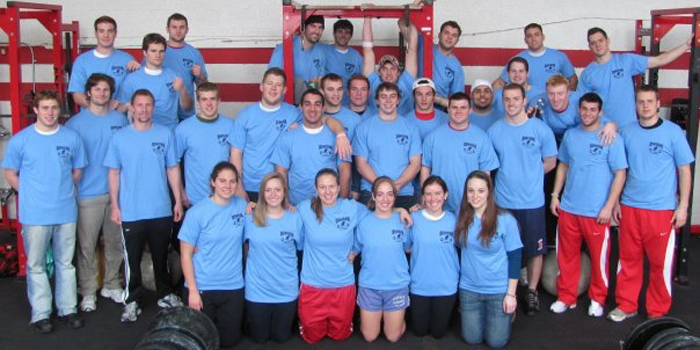
Believe it or not, there are still small college and high schools that do not have an organized and structured strength & conditioning program.
If you are in a position where you want to start a program at your institution, I would start with this article:
How to Add a Strength & Conditioning Coach to Your Athletic Department
Here's the best advice that I can give when starting out at a new strength & conditioning program at a High School or Small College.
Do it your way
The worst thing you can do is try to please everyone and look back and say, “I wish I would have done it like this…” I'm not saying that you shouldn't take any advice you can, but you have to do the best job you can within your circumstances. Working with so many sports, you won't be able to please everyone. I can;t tell you how many coaches I know that wish they would have done things their way from the start. If you are going to fail, fail by doing something you believe in knowing you gave it everything.
Don’t get caught up in sets and reps
Your number one job as a strength and conditioning coach is to create a culture in which those young men and women can succeed in their sport. This is extremely difficult because every team you work with will have its own unique culture–some because of and some in spite of–the head coach. You have to immerse yourself in those cultures. You are every head coach's assistant. But like Joe Kenn had told me, you are the head coach of the weight room and it will be much easier to instill your expectations early.
People who make fun of cookie cutter programs have never trained a couple hundred athletes by themselves
I'm not in any way saying that every athlete should be on the same program, but don’t burn yourself out trying to individualize every sport and every position. For most sports, movement patterns are similar. Changing direction on the field is the same as changing direction on the court. Every athlete can benefit from squats, pulls, presses, rows, and other similar movements. Where the differences lie are in energy systems for conditioning and some of your prehabilitation. The more athletes who are comfortable with your core principles and movements, the better off you’ll be.
Get the room set up right or set everything up based on your room
Todd Hamer has said that it's ridiculous for someone to ask a coach for a program without knowing exactly what equipment you have to use. You need to be able to write programs and get athletes better based on the equipment you have, regardless as to whether or not it “fits your philosophy.” This goes back to the notion that all strength coaches need to be adaptable and have as many "tools" as possible. The better understanding of the philosophy behind getting athletes better, the more effectively you will be able to implement it regardless of logistics.
Don’t label yourself
Utilize all the tools you have to improve the athletes’ performance. Don't fall into one type of training methodology because you like it and dismiss others because you don’t know anything about them. What may have worked at your last school may not work at your new school. It's your responsibility to figure that out.
It was very difficult for me to incorporate bands in chains in my program when I had none at Allegheny College. I wanted to be an Olympic guy at West Point, but my weight room had no platforms or bumpers. Point is, I learned to get athletes stronger with machines and equipment I had. The problem with labeling yourself along with a certain methodology (or worse yet, a certain exercise) is your next job may not allow it. Be adaptable.
Finally, open the lines of communication with your coaches as soon as possible
Simply put, they have more invested in their individual programs. Sport coaches have spent more time with those individuals before they even step foot on campus. A sport coach's career is more vest in that athlete's success in the long run. This communication process is a science in itself. You must be proactive and make sure every coach feels that you have his or her best interests in mind.
MONDAY
Front Squat
- 300x2
- 300x2
Box Jumps
3x2
Glute Ham Raise
- Pin 2 x6
- Pin 3 x15
supersetted with.....
GHR Sit-Up (w/o the CF Games hyperextension)
- High foot position x 10
- lower foot position x15
WEDNESDAY
Kettlebell Swings
70lbs 3 sets of 5
supersetted with
Box Jumps
3 sets of 5
Buffalo Bar Bench Press w/ Pause
- 250 x3
- 250 x5
- 250 x7
Light Band Pull Down Series
- Face Pulls x15
- Straight Arm Pull-Down x15
- 1 Arm Kneeling Pull-Down x15
- Straight Arm Pull-Down x15









1 Comment